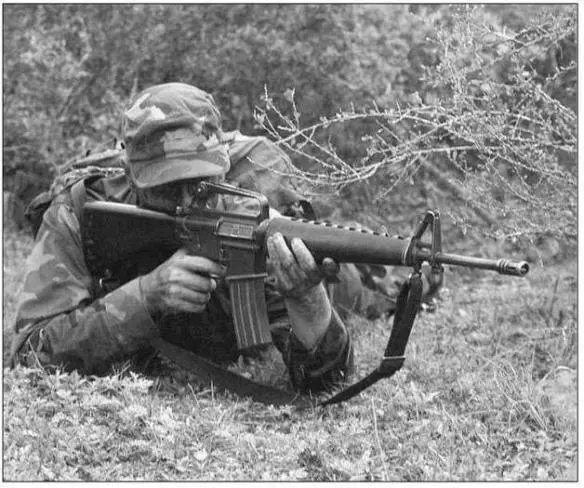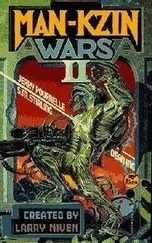Larry Kahaner - AK-47
Здесь есть возможность читать онлайн «Larry Kahaner - AK-47» весь текст электронной книги совершенно бесплатно (целиком полную версию без сокращений). В некоторых случаях можно слушать аудио, скачать через торрент в формате fb2 и присутствует краткое содержание. Город: Hoboken, Год выпуска: 2007, ISBN: 2007, Издательство: John Wiley & Sons, Inc., Жанр: История, military_history, на английском языке. Описание произведения, (предисловие) а так же отзывы посетителей доступны на портале библиотеки ЛибКат.
- Название:AK-47
- Автор:
- Издательство:John Wiley & Sons, Inc.
- Жанр:
- Год:2007
- Город:Hoboken
- ISBN:9780470315668
- Рейтинг книги:3 / 5. Голосов: 1
-
Избранное:Добавить в избранное
- Отзывы:
-
Ваша оценка:
- 60
- 1
- 2
- 3
- 4
- 5
AK-47: краткое содержание, описание и аннотация
Предлагаем к чтению аннотацию, описание, краткое содержание или предисловие (зависит от того, что написал сам автор книги «AK-47»). Если вы не нашли необходимую информацию о книге — напишите в комментариях, мы постараемся отыскать её.
AK-47 — читать онлайн бесплатно полную книгу (весь текст) целиком
Ниже представлен текст книги, разбитый по страницам. Система сохранения места последней прочитанной страницы, позволяет с удобством читать онлайн бесплатно книгу «AK-47», без необходимости каждый раз заново искать на чём Вы остановились. Поставьте закладку, и сможете в любой момент перейти на страницу, на которой закончили чтение.
Интервал:
Закладка:
Ordinarily, this kind of end-run tactic would not work, but these were unique times. The United States did not officially have troops in South Vietnam, only “advisors,” nomenclature designed to make the growing commitment more palatable to the American public. As such, the job of a special unit known as the Combat Development Test Center, located in Saigon, was to evaluate the military needs of the South Vietnamese army. It was already clear that the smaller-stature Vietnamese—the average recruit was five feet tall and weighed ninety pounds—could not handle the M-14’s recoil and weight. In addition, the average soldier could carry about three times more AR-15 ammunition than M-14 ammunition because of the lower weight of both the cartridges and rifle. This would be a decided advantage to jungle fighters out on long patrols.
The AR-15 was well received, and reports reached Washington about the lethality of the new weapon and smaller ammunition. American commanders and their South Vietnamese counterparts were especially impressed by the gunshot signatures seen in dead enemy soldiers, with reports of limbs being blown apart and chest cavities exploding after being hit by the high-velocity bullets.
Macdonald felt hopeful when Colt received an order for twenty thousand AR-15s, and he was further buoyed by the assistant secretary of defense’s report stating that the AR-15 was up to five times effective as the M-14 rifle as well as being cheaper to manufacture. Most startling, the report stated that the M-14 was inferior to the old M1.
McNamara and his Whiz Kids were surprised and confused by the discrepancy between this report and the Ordnance Department’s position supporting the M-14, so he ordered Secretary of the Army Cyrus Vance to reevaluate the M-14, the AR-15, and the AK. Even President Kennedy got involved, demanding that the situation be cleared up once and for all. Time was of the essence. By October 1962, the United States had committed more than ten thousand advisors to Vietnam without the best available weapon and it was clear that many more troops would be on their way to fight the Communist threat from the north.
Ensuing tests did not prove the anecdotal stories received from the battlefield about the AR-15’s superiority, and charges flew around the highest levels of government about rigged tests designed to make the new weapon look inferior. Ironically, one test showed that the AK had significantly fewer malfunctions than all other weapons (there were some disagreements here, too), but several findings were irrefutable: the AR-15 was lighter, infantrymen could carry more of its ammunition, it was cheaper than the M-14, and it could be produced quickly.
McNamara decided to kill production of the M-14 by 1963 and begin production of the AR-15. He ordered eighty-five thousand AR-15s for the army and nineteen thousand for the air force. Opponents argued that his decision was based on bottom-line numbers—cheaper per unit costs and fast production—but his word was final nonetheless.
Whatever his reason, McNamara was clearly angry at the way Ordnance had handled the entire matter; several years earlier he had called the M-14 project a “disgrace” during public hearings. In congressional testimony he said, “It is a relatively simple job to build a rifle, compared to building a satellite.” In McNamara’s shakeup of the Ordnance bureaucracy, the name was changed to the U.S. Army Materiel Command, and Carten found himself transferred from the Springfield Armory to the army’s Rock Island Arsenal in Illinois.
The Springfield Armory also took heat for its complicity in the M-14 affair. For the first time, an outside vendor, Colt, was going to be the lead supplier of the army’s main weapon, now officially designated as the M-16. It used a .223-caliber cartridge with the military-metric designation of 5.56 × 45mm.
McNamara got even tougher and demanded that all branches of the military work together on modifying the M-16 for full-scale production and battle-readiness. Again, however, he found himself frustrated by the military bureaucracy’s inability to move quickly and decisively. McNamara was used to giving orders at Ford and having them followed immediately and exactly, and he soon found himself at odds with career military personnel as well as civil servants who resisted the new businesslike regime. Government, especially the military establishment, did not work that way. The process was slow, arduous, and contentious. Turf battles continued as various departments micromanaged the project to protect their interests and support their beliefs.
SEVERAL EVENTS IN 1963 PUSHED McNamara for an even faster resolution. In January, the South Vietnamese army, equipped with M-14s, was defeated at Ap Bac by Vietcong carrying AKs. The reports of this automatic weapon’s devastating effects worried U.S. commanders. It was becoming clear that an automatic weapon was crucial for winning in Vietnam because of a new pattern of warfare starting to emerge. Confrontations often consisted of what were termed “meeting engagements,” in which jungle patrols from both sides found themselves unexpectedly face-to-face, and the side that could pump out the most rounds in the shortest amount of time won the skirmish. The M-14 was no match for the AK in these close-quarter encounters.
Again, U.S. military planners were caught unprepared for a different kind of warfare that took place in dense jungles against an enemy that you could not track in advance. Superior airpower was often ineffective, so battles would come down to the infantryman carrying the best weapon for the environment. The United States lagged.
On November 2, 1963, South Vietnamese generals assassinated President Ngo Dinh Diem and his brother and advisor, Ngo Dinh Nhu. Diem was a heavy-handed dictator whose regime so enraged the majority Buddhist population that monks set themselves on fire in the street to protest their oppression. The Kennedy administration expressed shock at the public immolations and dismay at the assassinations, but did nothing to discourage the generals’ actions. At the time of Diem’s death, the United States had about sixteen thousand advisors in South Vietnam. Now, with Diem gone, and American casualties beginning to mount, the nation was getting sucked into a larger combat role as the South Vietnamese government foundered and a string of corrupt generals ruled the country.

Only three weeks after Diem’s death, President John F. Kennedy was assassinated in Dallas, and Vice President Lyndon B. Johnson soon escalated his predecessor’s policies. In August 1964, Pentagon officials said that U.S. warships had been attacked in the Gulf of Tonkin by North Vietnamese patrol boats. These attacks prompted Congress to give President Johnson a free hand in Vietnam, through the Gulf of Tonkin Resolution. This incident was later revealed to be a fabrication of the administration. No matter. The war was now in full swing and Special Forces, CIA operatives, and other elite units received the AR-15 to help counterbalance the AK.
Still, most U.S. forces were issued the M-14, and General William Westmoreland, who took command in Vietnam in June 1964, replacing General Paul Harkins, held a meeting of his commanders in Saigon in November 1965 to discuss how poorly the weapons fared against the AK. Congressional hearings held years later noted that GIs were buying black-market AR-15s for $600, compared to a list price of $100.
Читать дальшеИнтервал:
Закладка:
Похожие книги на «AK-47»
Представляем Вашему вниманию похожие книги на «AK-47» списком для выбора. Мы отобрали схожую по названию и смыслу литературу в надежде предоставить читателям больше вариантов отыскать новые, интересные, ещё непрочитанные произведения.
Обсуждение, отзывы о книге «AK-47» и просто собственные мнения читателей. Оставьте ваши комментарии, напишите, что Вы думаете о произведении, его смысле или главных героях. Укажите что конкретно понравилось, а что нет, и почему Вы так считаете.











